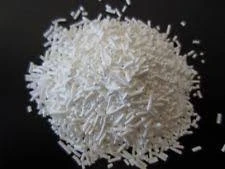
formic acid acid
Formic Acid An Overview of Its Properties, Uses, and Safety
Formic acid, with the chemical formula HCOOH, is the simplest carboxylic acid. It is a colorless liquid with a pungent odor and is found naturally in various sources, including the venom of ants, which is where its name derives. The word formic is derived from the Latin term formica, meaning ant. This article will explore the properties of formic acid, its applications across different industries, and important safety considerations.
Properties of Formic Acid
Formic acid has a melting point of approximately -16°C and a boiling point of 100.8°C. It is highly soluble in water, ethanol, and ether, making it an effective solvent for various applications. Formic acid exists largely in its ionized form (formate ion) in solution, which contributes to its reactivity and usefulness in various chemical processes.
The acid has strong reducing properties, which can facilitate numerous chemical reactions, especially in organic synthesis. It can participate in esterification reactions with alcohols, leading to the formation of formate esters. Additionally, formic acid can act as a reducing agent in different reactions, including those involving metal ions.
Applications of Formic Acid
Formic acid finds a wide range of uses in numerous industries. One of its primary applications is in the agricultural sector, where it is utilized as a preservative for silage and animal feed, preventing spoilage and ensuring nutritional quality. Additionally, formic acid is beneficial in controlling pests and as a monomer in the production of biodegradable plastics.
In the textile industry, formic acid is employed during the dyeing and finishing processes. It helps maintain the pH levels needed for effective dye application and enhances the overall quality of the textiles. Furthermore, the leather industry uses formic acid to assist in tanning processes, making the leather more durable and more resistant to wear.
formic acid acid

Formic acid also plays a crucial role in the field of pharmaceuticals, where it is used as a building block for various drug synthesis. Its derivatives are found in some medications, and it can act as a precursor in organic synthesis. In laboratories, formic acid is commonly utilized as a reagent in the preparation of more complex organic compounds.
Moreover, formic acid is gaining interest as an energy carrier. It can be used in fuel cells as a hydrogen source, offering a potential alternative to traditional fuel sources. Research into formic acid fuel cells has grown, highlighting its potential in the transition to more sustainable energy systems.
Safety Considerations
While formic acid is useful in many applications, it is essential to handle it with care due to its corrosive properties. Direct contact with the skin can cause irritation and burns, and inhalation of vapors can lead to respiratory issues. Proper personal protective equipment, including gloves and face masks, should be worn when working with this substance.
In case of exposure, it is vital to seek immediate medical assistance. If formic acid comes into contact with the skin or eyes, it should be rinsed off thoroughly with water, and professional medical help should be sought promptly.
Formic acid should be stored in a well-ventilated area away from incompatible substances, particularly strong bases and oxidizing agents. Safety data sheets (SDS) should always be consulted for specific handling and storage guidelines.
Conclusion
Formic acid is a versatile chemical with a plethora of applications in agriculture, textiles, pharmaceuticals, and energy. Its properties make it an essential compound in various industrial processes. However, due to its corrosive nature, safety precautions must be taken when handling this acid. As research continues, formic acid may play an increasingly significant role in sustainable practices and technologies.
-
Understanding Synthetic Rubber OptionsNewsApr.27,2025
-
Trichloroisocyanuric Acid: Essential for Clean and Safe WaterNewsApr.27,2025
-
Sodium Dichloroisocyanurate: Key to Safe Water TreatmentNewsApr.27,2025
-
Sodium Acid Pyrophosphate: Essential in Modern Food ProcessingNewsApr.27,2025
-
Essential Water Treatment ChemicalsNewsApr.27,2025
-
Denatured Alcohol and Its Industrial UsesNewsApr.27,2025
-
The Versatile Uses of Sodium BicarbonateNewsApr.24,2025
Hebei Tenger Chemical Technology Co., Ltd. focuses on the chemical industry and is committed to the export service of chemical raw materials.
-

view more DiethanolisopropanolamineIn the ever-growing field of chemical solutions, diethanolisopropanolamine (DEIPA) stands out as a versatile and important compound. Due to its unique chemical structure and properties, DEIPA is of interest to various industries including construction, personal care, and agriculture. -

view more TriisopropanolamineTriisopropanolamine (TIPA) alkanol amine substance, is a kind of alcohol amine compound with amino and alcohol hydroxyl, and because of its molecules contains both amino and hydroxyl. -

view more Tetramethyl Thiuram DisulfideTetramethyl thiuram disulfide, also known as TMTD, is a white to light-yellow powder with a distinct sulfur-like odor. It is soluble in organic solvents such as benzene, acetone, and ethyl acetate, making it highly versatile for use in different formulations. TMTD is known for its excellent vulcanization acceleration properties, which makes it a key ingredient in the production of rubber products. Additionally, it acts as an effective fungicide and bactericide, making it valuable in agricultural applications. Its high purity and stability ensure consistent performance, making it a preferred choice for manufacturers across various industries.











